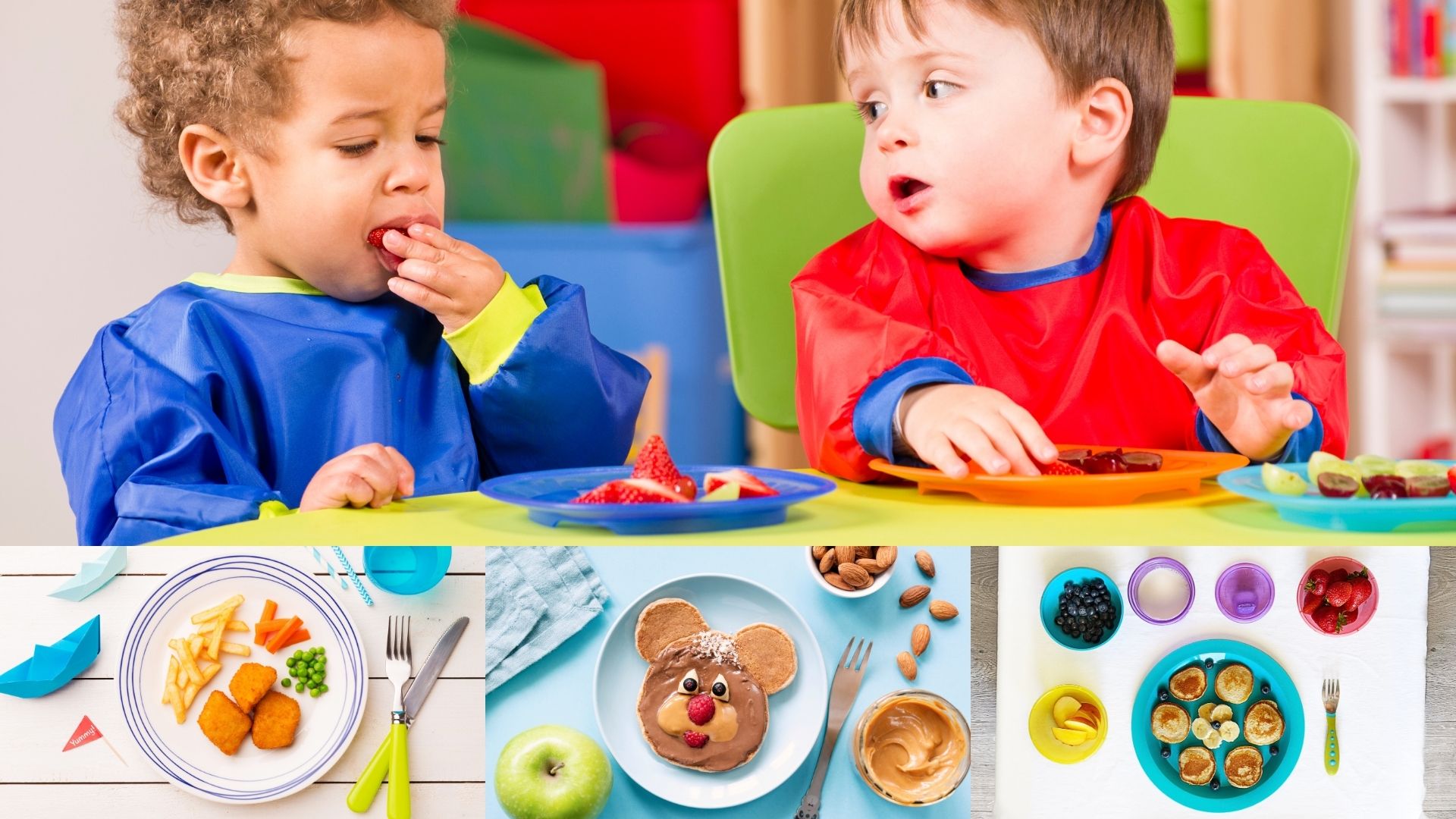If you’ve ever wondered, “Am I giving my child enough food? Or maybe too much?” you’re not alone. Every baby, toddler, and preschooler has a different appetite, and that’s completely normal. The good news is that there are simple ways to figure out the right portion sizes, so your child gets the nutrition they need without the stress.
Let’s walk through what healthy eating looks like at each stage of growth, and how the MyPlate Calculator can give you a personalized plan for your family.
Babies (6–12 Months): Tiny Tummies, Big Needs
In the first year, breast milk or formula is still your baby’s main source of nutrition. Around six months, you can begin introducing small amounts of solid foods- just 1 to 2 tablespoons at a time. Think of it as practice for eating, not the main meal. Babies this age usually eat every 2 to 3 hours, or about 4 to 6 times a day.
Pay close attention to hunger cues: reaching for food, opening their mouth when they see the spoon, or getting fussy. Just as important are the fullness cues: turning their head away, pushing food out, or closing their mouth. Following your baby’s signals helps them learn to trust their own hunger and fullness. Check out our blog post “Starting Solids: A Parent’s Guide to Confident, Safe Feeding” for more details.
Typical servings at this age:
- Breastmilk on demand or about 24 oz formula daily (if you are not breastfeeding)
- 1–2 tablespoons of soft food per meal (mashed banana, oatmeal, scrambled egg, or pureed veggies)
- Small sips of water from a cup or sippy cup, starting around 6 months
See a full 8-12 month sample menu
Toddlers (1–3 Years): Small Portions, Big Energy
Once your baby becomes a toddler, their growth slows down, and so does their appetite. This can be surprising after the rapid growth of the first year! Don’t worry if they eat a lot one day and very little the next- what matters is how they eat over the course of a week and that they continue to stay on track with their growth.
A simple rule of thumb: toddler portions are about ¼ the size of an adult’s. That means just a spoonful or two of vegetables, a couple of tablespoons of beans, or a small piece of bread is enough. On average, toddlers need about 1,000–1,300 calories per day, depending on activity level.
Typical toddler servings:
- ½ an egg or 2–3 tablespoons of beans
- 1–2 tablespoons of vegetables or fruit
- ½ slice of bread/tortilla or ¼ cup of cooked pasta/rice
- ½ cup milk or yogurt at meals/snacks
See a full 1-year-old sample menu
See a full 2-year-old sample menu
Preschoolers (3–5 Years): Learning Family Habits
By the preschool years, kids are ready to eat the same meals as the rest of the family. Their portion sizes are still smaller than an adult’s, but they should be exploring a wider variety of foods. Offer half a cup of fruits, veggies, and grains at mealtimes, along with about 2 ounces of protein and half a cup of milk or yogurt.
Preschoolers thrive on routine, so aim for three meals and one or two snacks each day. Encourage them to join family meals- this is where they learn healthy eating habits that can last a lifetime.
Typical preschooler servings:
- ½ cup fruits and ½ cup vegetables at each meal
- ½ cup grains (like rice, pasta, or cereal)
- 2 ounces meat, poultry, or beans
- ½ cup milk or 1/3 cup of yogurt
See a full preschooler sample menu
Moms (Pregnant or Breastfeeding): Fuel for You and Baby
While little ones are learning to eat, moms also need the right nutrition- especially during pregnancy and breastfeeding. Healthy choices like fruits, vegetables, whole grains, lean proteins, and dairy support both mom’s health and baby’s growth.
Seafood can be a great protein source, as long as it’s low in mercury (such as salmon, cod, or tilapia). Avoid alcohol, raw sprouts, and unpasteurized juices, milk or cheeses. Since calorie and nutrient needs change during pregnancy and breastfeeding, tools like MyPlate are especially helpful in figuring out the right amounts.
Typical serving needs for moms:
- Fruits & veggies: 2–3 cups per day
- Grains: 6–8 ounces, at least half whole grains
- Protein: 7-9 ounces (choose lean meats, beans, or fish low in mercury)
- Dairy: 3 cups (low-fat milk, yogurt, or fortified soy alternatives)
Why MyPlate is a Game-Changer
So how do you know if your child or you are eating the right amounts? That’s where MyPlate comes in.
MyPlate is a simple picture of a plate divided into food groups:
- ½ fruits and veggies
- ¼ grains (bread, pasta, rice)
- ¼ protein (chicken, beans, eggs)
- Plus, a side of dairy like milk or yogurt.
But the real power is in the MyPlate Calculator, which creates a daily food plan tailored to your age, sex, and activity level. It can:
- Adjust portions for your toddler or preschooler
- Give calorie and food group needs for pregnant and breastfeeding women
- Show amounts in everyday measures like cups, tablespoons, and ounces
Try the MyPlate Calculator below to get a personalized plan for you and your child!
Final Tips for Families
- Let kids listen to their bodies- no need to push “one more bite.”
- Keep offering a variety of foods, even if they refuse them at first.
- Use kid-sized dishes to avoid over-serving.
- Make mealtimes fun- eat together, share stories, and enjoy the food.




